by GaryG
Putting it mildly, we are living in interesting times. Longstanding habits, including getting out into the world, have been broken for most of us. And while most of the world is now emerging from months of personal isolation, here in the United States it looks as if we might have to get used to enforced loneliness again fairly soon.
But that doesn’t mean that we can’t stay busy and even learn a thing or two. From the torrent of really well done watch photos appearing on Instagram and other media these days, it appears as though lots of watch enthusiasts have been spending at least some of their time polishing their macro photography and wrist shooting.
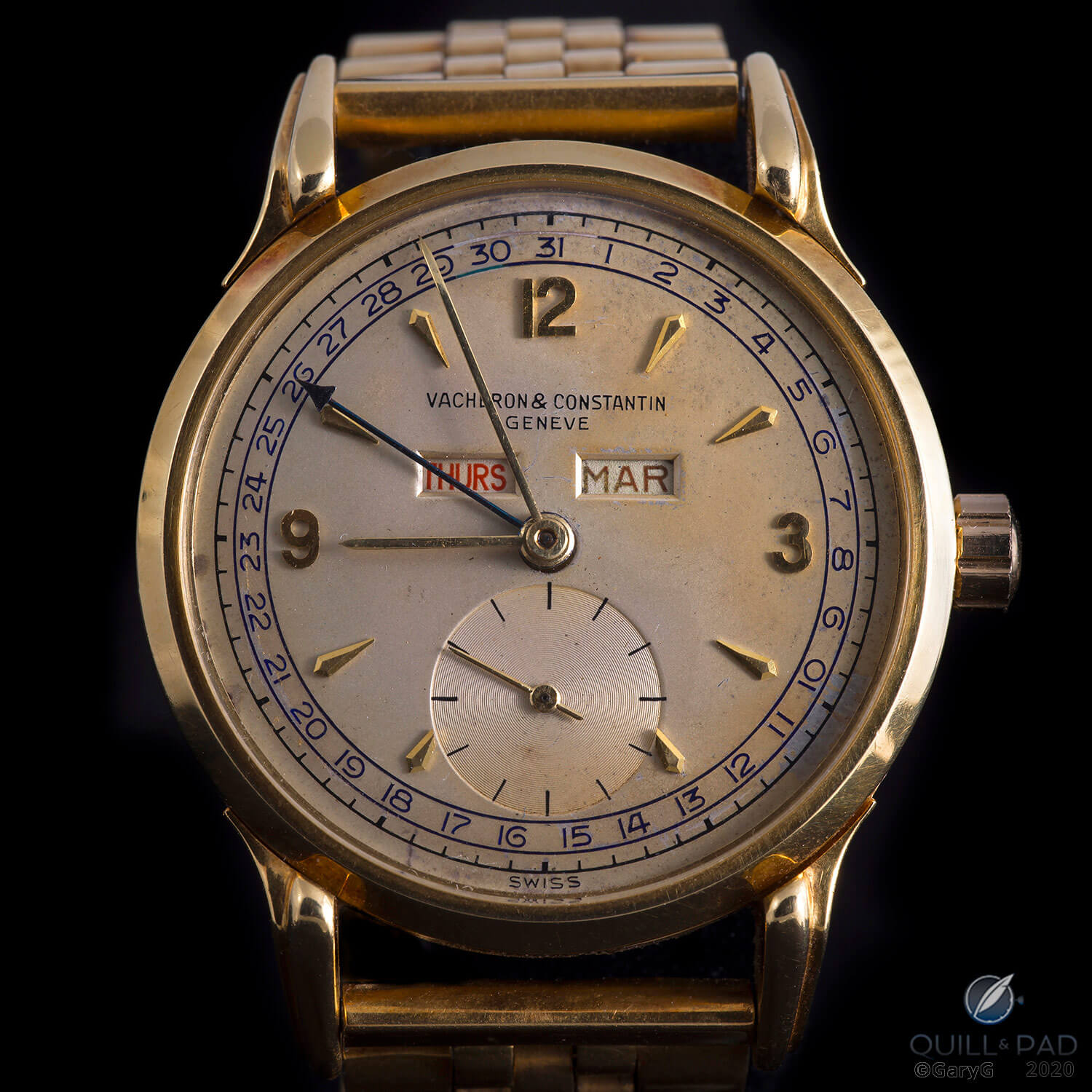
Flash(y) shooting: the author’s Vacheron Constantin Reference 4560
And I’m among them! My photography teacher, pro shooter, and watch company “benevolent dictator” Ming Thein had been bugging me for a while to add the use of flash guns to my macro technique – and with the luxury of time and Ming’s kind guidance, I’ve shot more than 4,600 flash images since late March in the light tent as I’ve begun to learn the ins and outs of flash macro photography.
One quick note: if you are already a practiced flash macro photographer, much of what follows may be painfully obvious to you; but I’m hoping that at least some of it may be useful to some others who, like myself, are early on the flash-shooting journey.
Getting started with flashes
The adventure started with a bit of Ming-guided GAS (Gear Acquisition Syndrome, a well-known phenomenon among shooters of all abilities) to add a surprisingly affordable set of Godox V1 flashes and accompanying controller to my pile of gear.
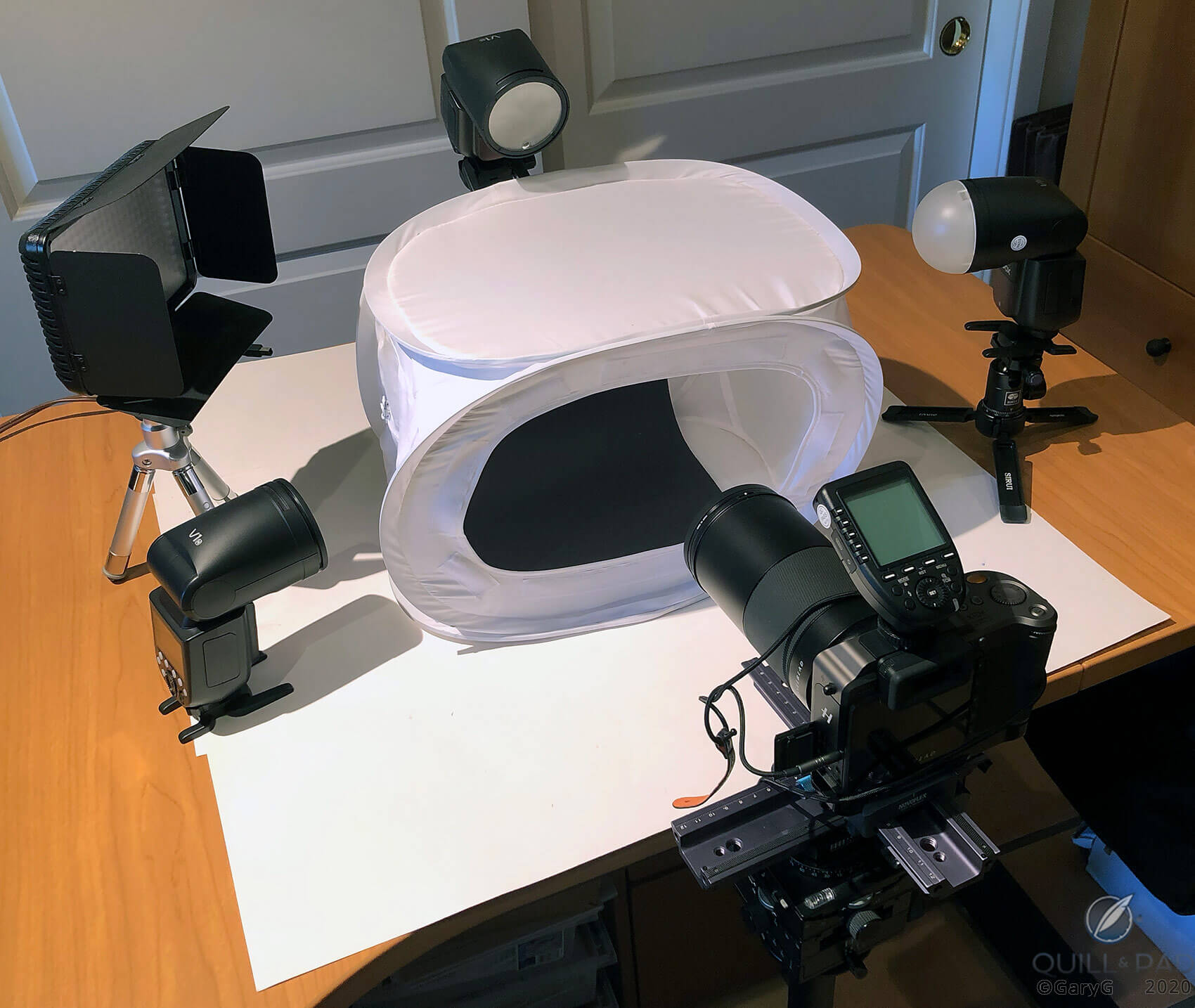
Gearing up: tabletop macro shooting setup with Godox flashes, contrasted with a standing LED panel light
After a fairly lengthy video tutorial from Ming, I started simply with a single flash and my Vacheron Constantin Reference 4560, practicing the fundamentals of light placement and intensity and grabbing a variety of shots including the one that starts this article.
I expected to have real difficulties with setting lighting angles compared to how I’d been doing it with my familiar always-on LED panels, but the small modeling lights in the flash heads do allow a rough preview of where shadows and light scatters will fall once the gun is triggered, and that helped a lot.

Movement view, Grönefeld 1941 Remontoire
When in doubt (or starting out), choose an easy target! My next subject was the movement side of the Grönefeld 1941 Remontoire, a caliber whose pronounced textures, scattered shiny bits, and multiple layers make it one of my favorite pieces to shoot.
With a bit of practice, I learned that it was easily possible to throw more light onto the movement and to generate deeper shadows than I typically was able to do with my standing lights. The results were shots that really popped – with strong contrasts but without losing the inner workings of the movement in darkness.
Shining light into the depths
Illuminating the depths of various movements quickly became addictive; and I rapidly turned to another masterpiece of movement design, the Datograph Perpetual from A. Lange & Söhne.
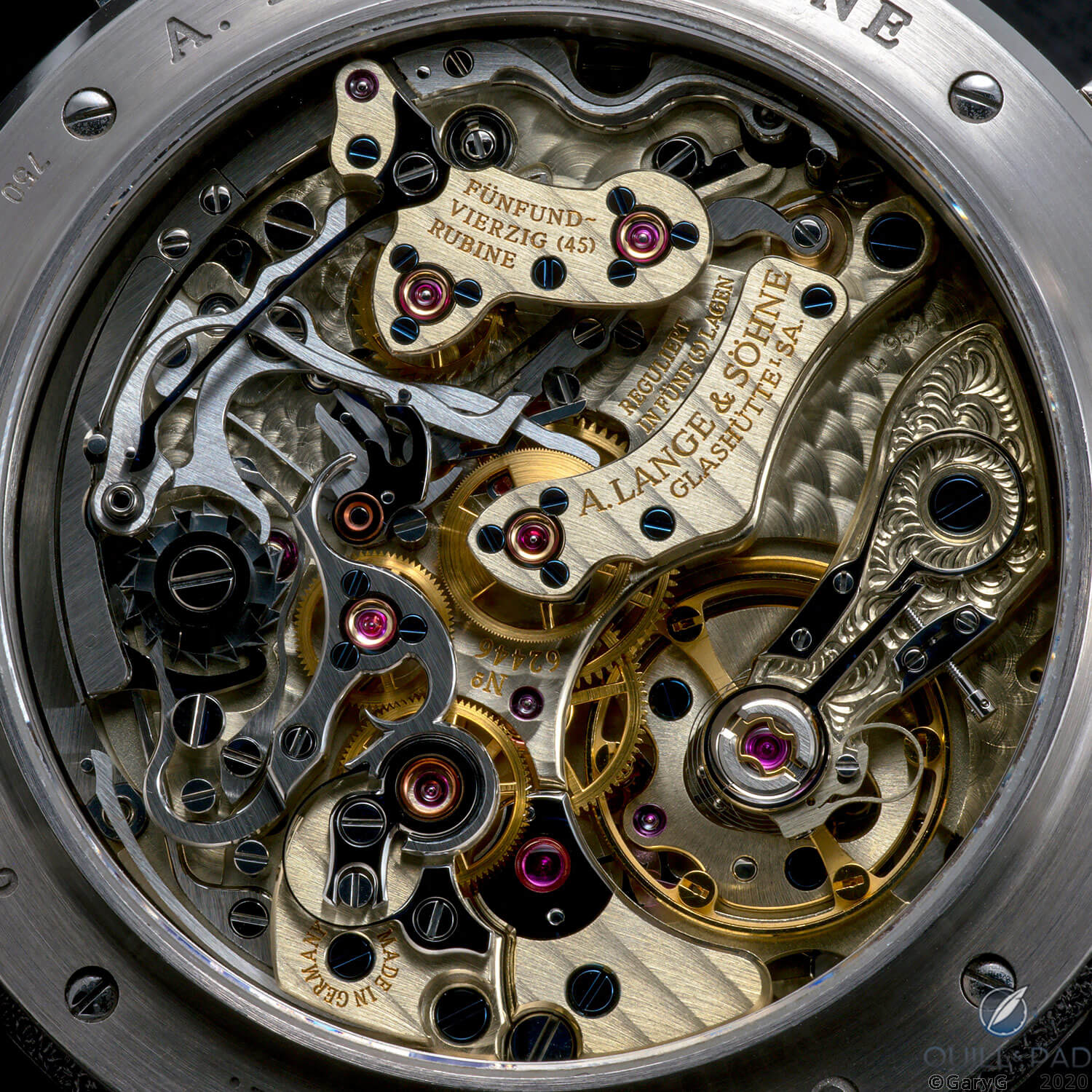
Depth reading: A. Lange & Söhne Datograph Perpetual
If anything, Caliber L952.1 of the A. Lange & Söhne Datograph Perpetual is even deeper than the Grönefeld movement, and for visual interest it adds a lovely hue of German silver. Using the flashes, I found it pretty simple (after a bunch of practice, that is) to capture the color variations of the movement without having the gold-colored elements jump out as harshly and overly yellow as I’d so often experienced with standing lights.
The Datograph also did me a favor with its brushed rear bezel, as one tricky part of using flashes is the risk of blowing out polished metal surfaces if you don’t diffuse the light enough.
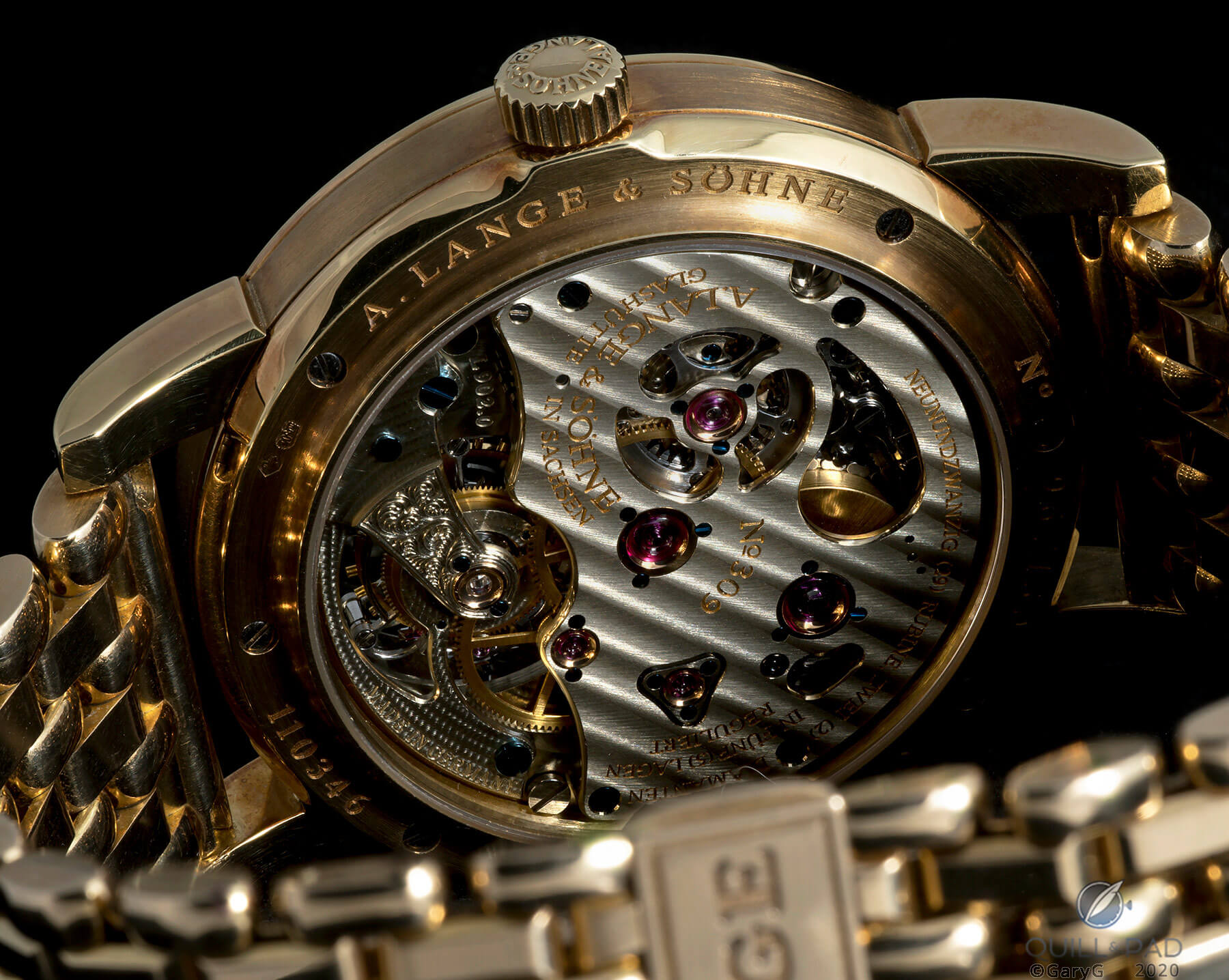
Movement view, Pour le Mérite Tourbillon by A. Lange & Söhne
I’ve always found the movement of A. Lange & Söhne’s Pour le Mérite Tourbillon to be quite difficult to capture correctly, but with flashes I’m starting to get there, I think. And a shot that has long bedeviled me, the movement of my Voutilainen Chronograph II, now seems within reach through the use of the case back interior as a bounce surface for a high-mounted flash.
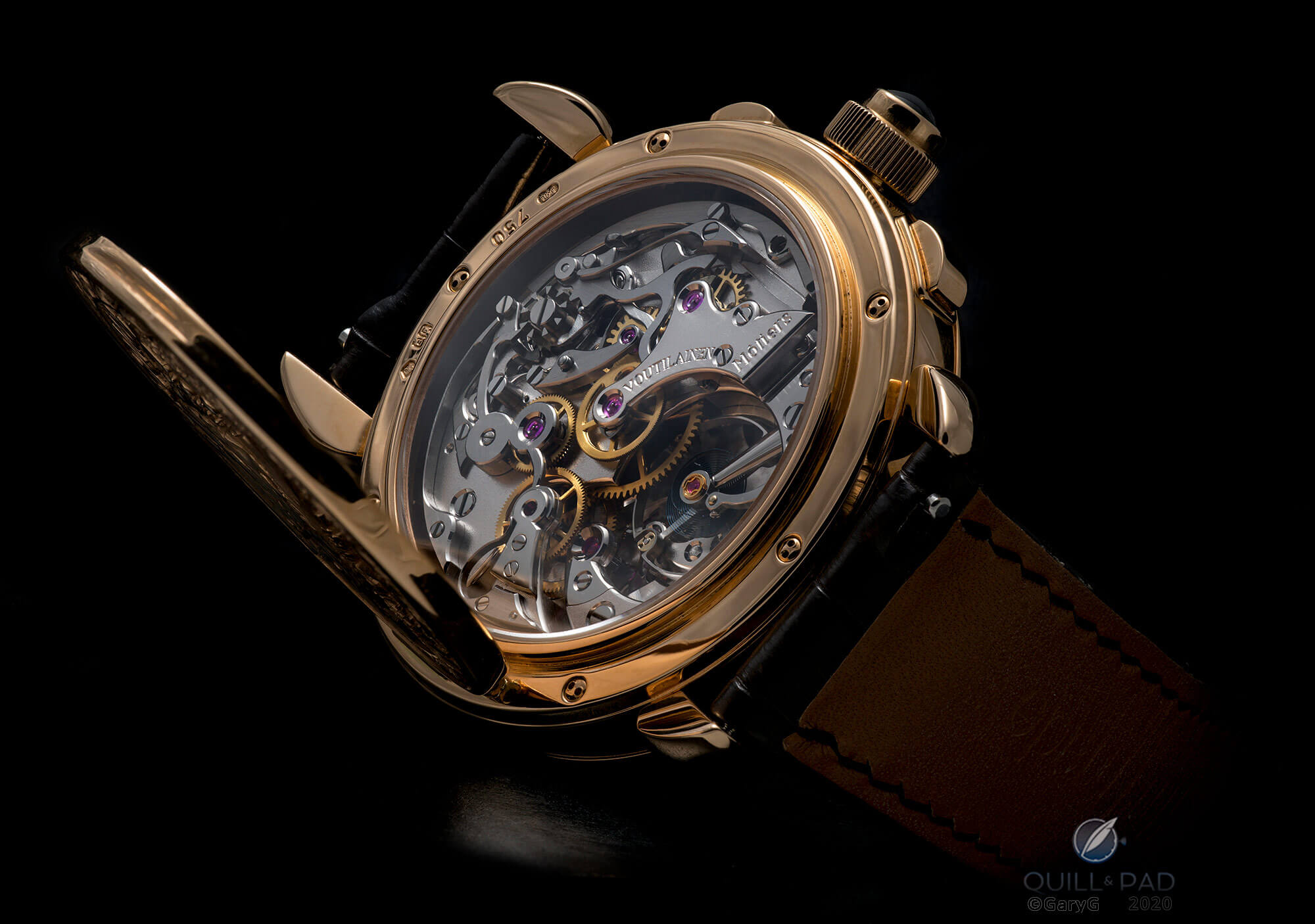
Voutilainen Masterpiece Chronograph II, movement side
Thanks to Kari Voutilainen and his case-making operation, I have the pleasure of seeing and photographing Caliber 12-600 AT of my Patek Philippe Reference 2526 whenever I want; the ability to position and pinpoint a flash to get light into the interior without blowing out the case was enormously helpful, and as with all of the movement shots the intensity of the flash really helped to make the jewels shine with a warm red glow.
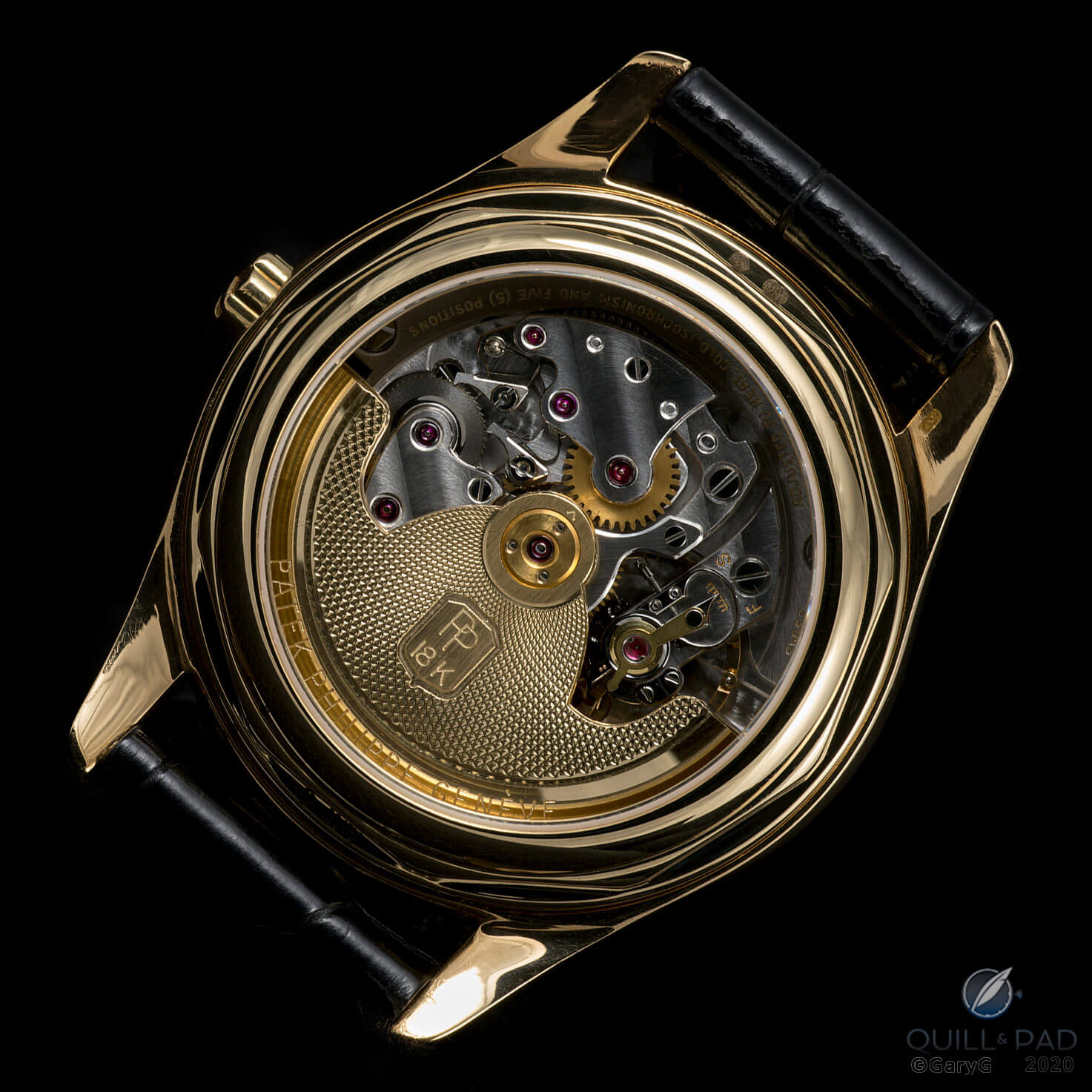
Patek Philippe Caliber 12-600 AT, Reference 2526 with custom Voutilainen-Cattin case back
I was having enough fun that I cloned together two movement shots of the Reference 2526, one taken with the crown to the right and the other with the crown to the left, and then erased the overlapping outer section of the gold rotor in each to yield a view of a “rotorless” movement.

Mystery rotor? Cloned movement shots, Patek Philippe Reference 2526 with custom case back
Not all depths are on the backs of watches, either; the front of the Greubel Forsey Invention Piece 1 provided a suitable test bed for some high-contrast shooting as well.

Invention Piece 1, No. 01/11 by Greubel Forsey
Bringing out details and shedding new light
The ability to modulate the intensity of light over a very wide range, and to use combinations of light that don’t exist in the natural world (for instance, a bright primary light with a dimmer fill light from the same direction), turns out to be very useful in illuminating details that aren’t easily captured with continuous and fairly large panel lights.
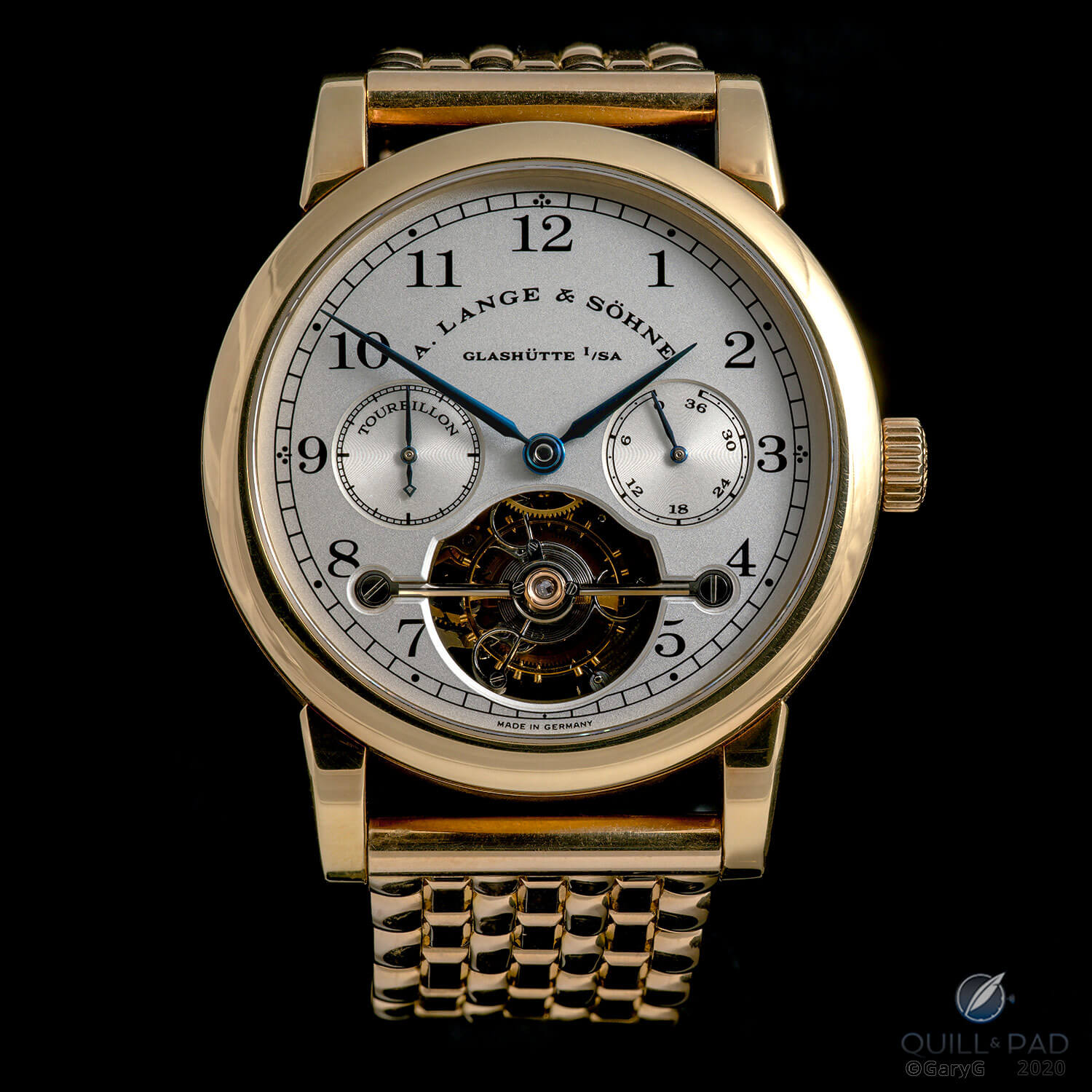
Dial side, A. Lange & Söhne Pour le Mérite Tourbillon
A case in point: the dial of the A. Lange & Söhne Pour le Mérite Tourbillon, which I’d had trouble in the past capturing as anything other than a blah grey or overly bright white.
With the right flashes, the grainy silver surface of the dial is plainly evident, and at the same time the blued hands are an obvious blue. We can also see the play of light in the diamond endstone of the tourbillon.
The ability to direct light tightly through the “snoot” that comes with the Godox gun helps with subject isolation, as in the shot below of the H. Moser x MB&F Endeavour Cylindrical Tourbillon, in which the tourbillon with its cylindrical spring is emphasized both through spotlighted light and depth of field.
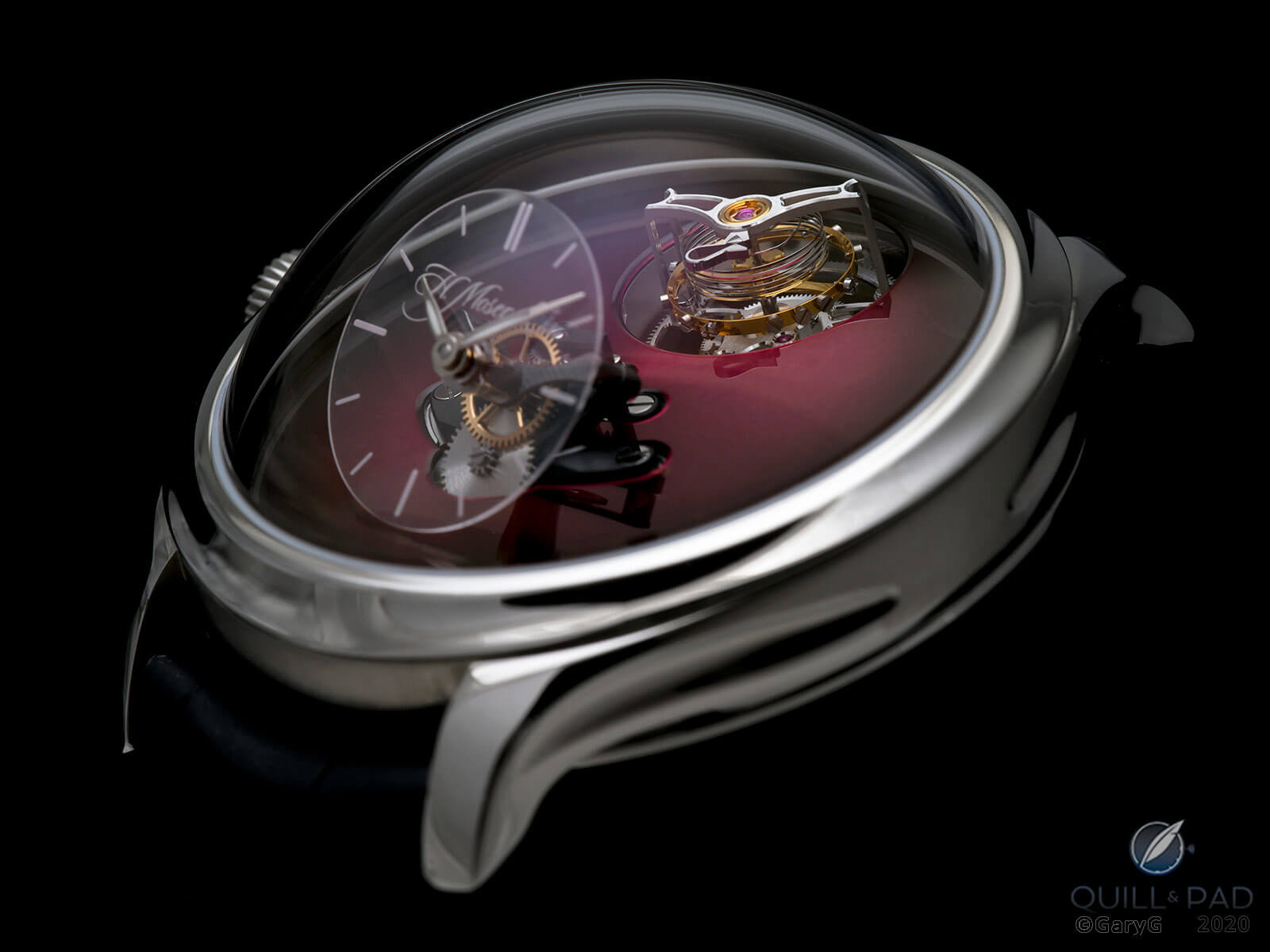
H. Moser x MB&F Endeavour Cylindrical Tourbillon
New looks: beyond basic black
Watches bursting out of (or sometimes sinking into) a stark black background are the staple of my watch shooting style, but it doesn’t hurt to branch out. With new tools at hand and the resulting impetus to try new things, I’ve been diversifying a bit.
In an upcoming article, I’ll be taking an in-depth look at a good friend’s Vianney Halter Anniversary Classic. For now, here’s one teaser shot, taken as a single exposure (without stacking) against a light background and on a reflective base.

A bit different: Vianney Halter Anniversary Classic
Next up was an old favorite of mine, the Jaeger-LeCoultre Géographique placed against a brighter background and at a severe angle.
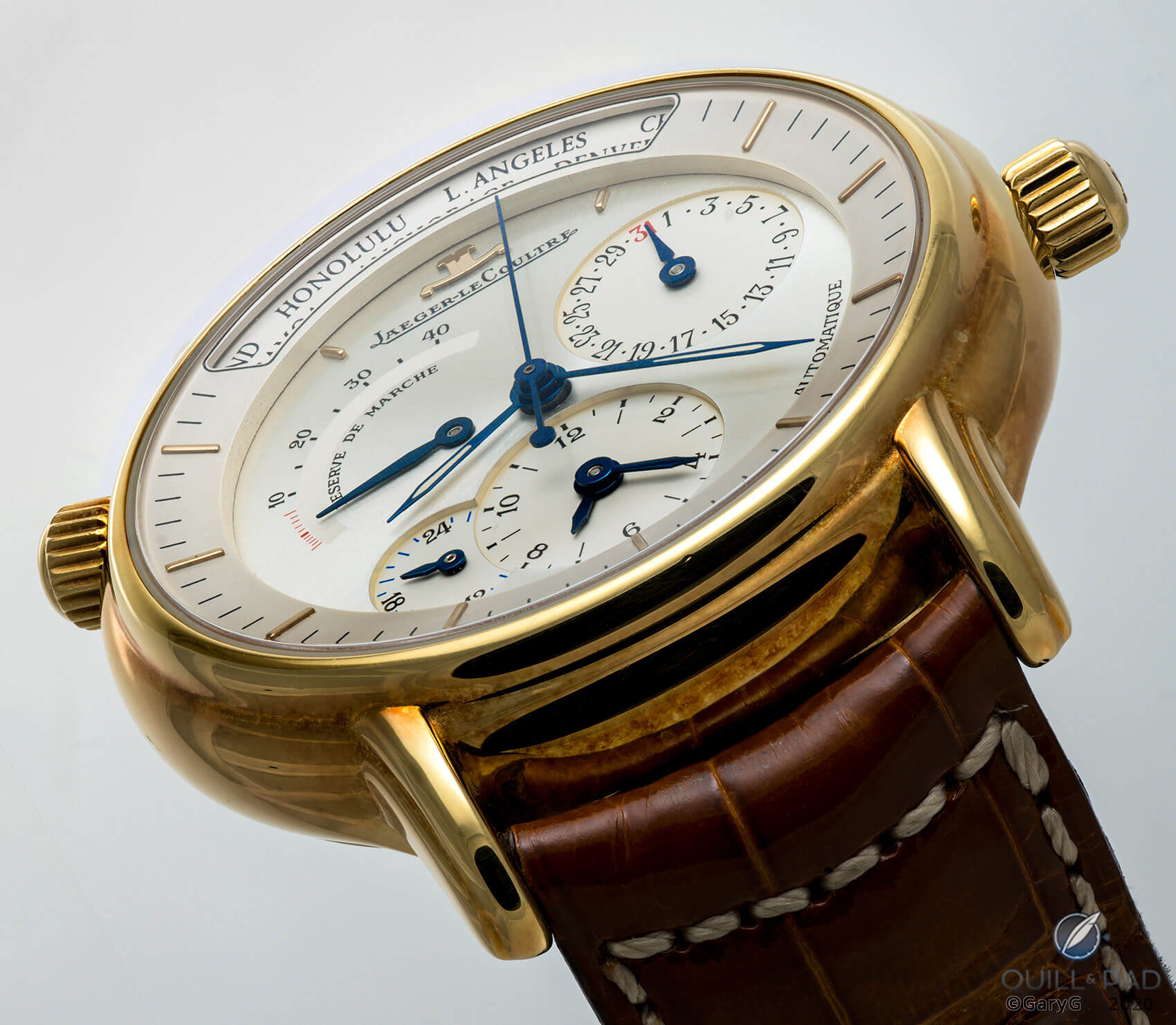
Jaeger-LeCoultre Géographique
Finally, a shot of the Greubel Forsey Invention Piece 1 using a colored filter on one of the flashes to give a softer effect. As an example of how certain images are better-suited to some media than others, I’ll note that this image looked super when cropped to 2×1 and displayed as a double-wide image on Instagram; you can judge for yourself whether it translates as well here.
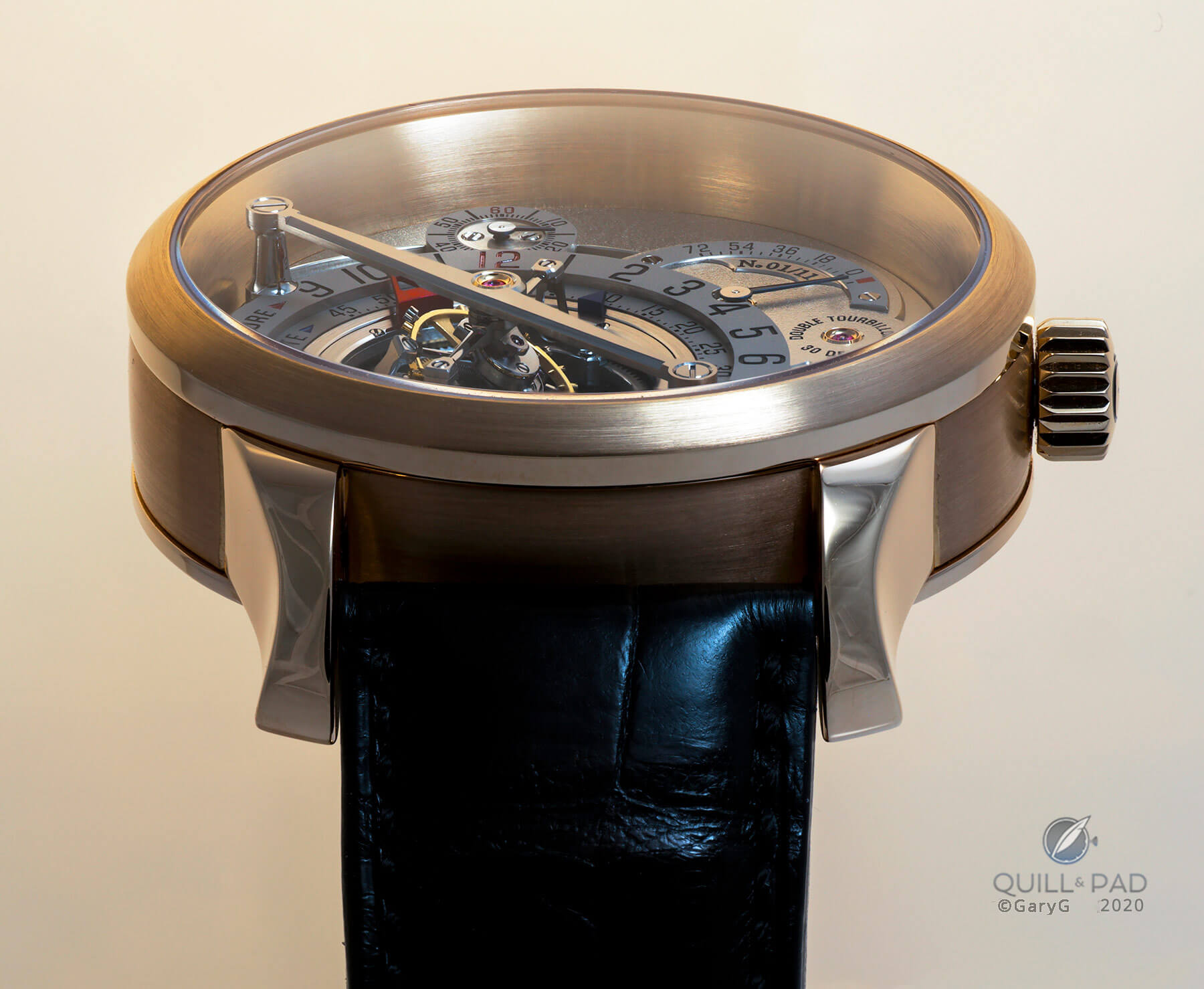
Greubel Forsey Invention Piece 1, softer effect through colored filter
Capturing difficult subjects and operating in non-ideal conditions
As noted above, some watches are harder to capture than others. And some types of setups are extremely more challenging than their counterparts.
One good example, and a type of shot that I quite like to attempt, is a multi-watch setup in which two or more pieces are exhibited side by side. Especially with black backgrounds, it’s pretty easy to cheat this kind of shot by taking two separate images and pasting them together. But then again, what’s the fun in that?
Here’s one recent shot from my review of the collaboration pieces of MB&F and H. Moser: the two watches in one image, with the green MB&F dial clearly visible in the crystal of the Moser. It’s a shot that would have been very difficult to capture without being able to fire two flashes with different intensities from two directions simultaneously.
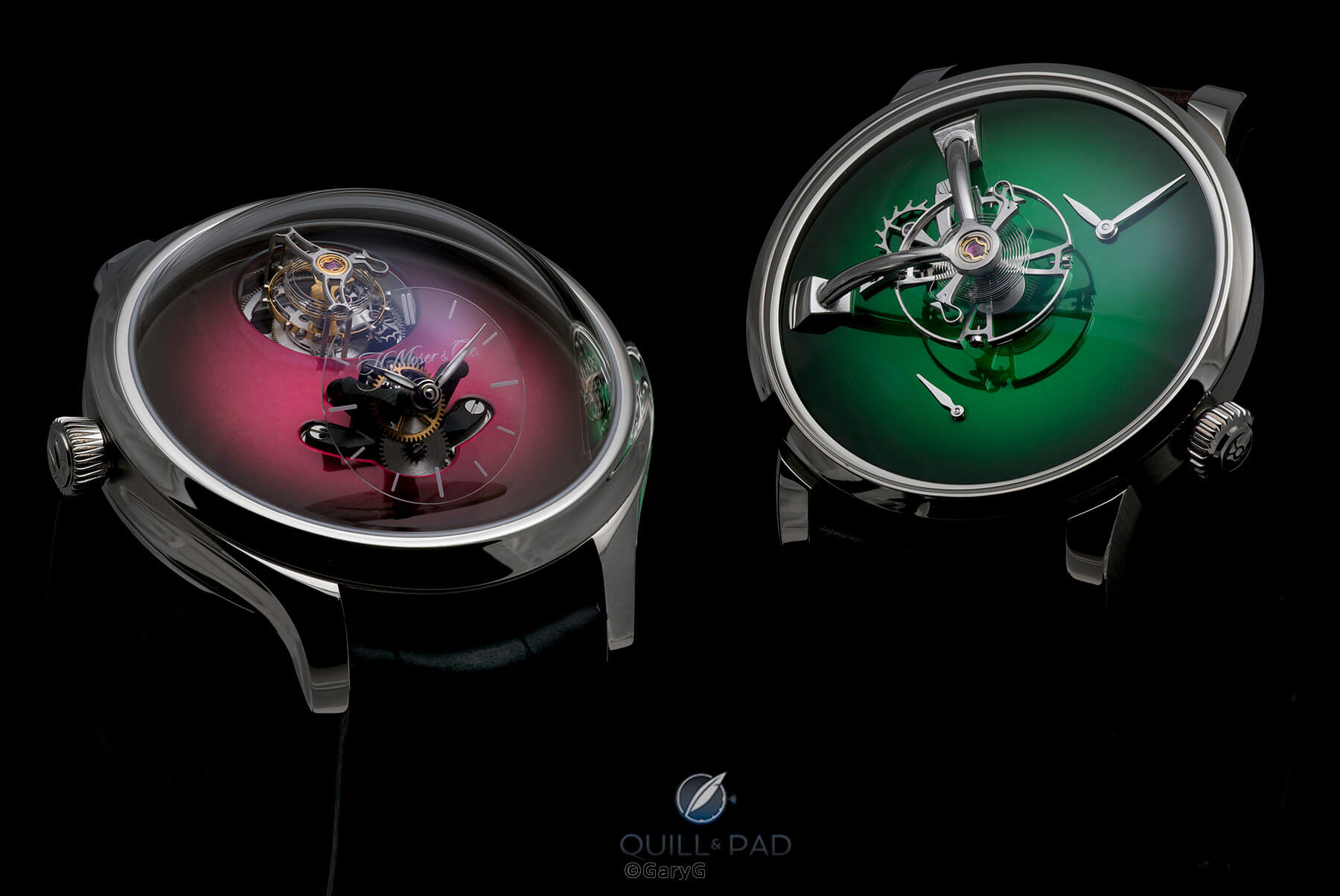
Side by side: H. Moser x MB&F collaboration watches, 2020
Another two-watch shot from the same article also involved the Project LpX loupe holder. You can see the location of the primary flash gun reflected in the crystals of the two watches; what you can’t see is that this image was shot during the daytime and outside of the light tent, using the ability of bright flashes and very short exposure times to make ambient light irrelevant.
After years of shooting with fixed LED panels and needing to make sure not only that bright ambient light was blocked but also that vibrations were held to an absolute minimum, it’s quite a pleasure to be able to zap a subject at 1/350 of a second, drowning out background considerations.
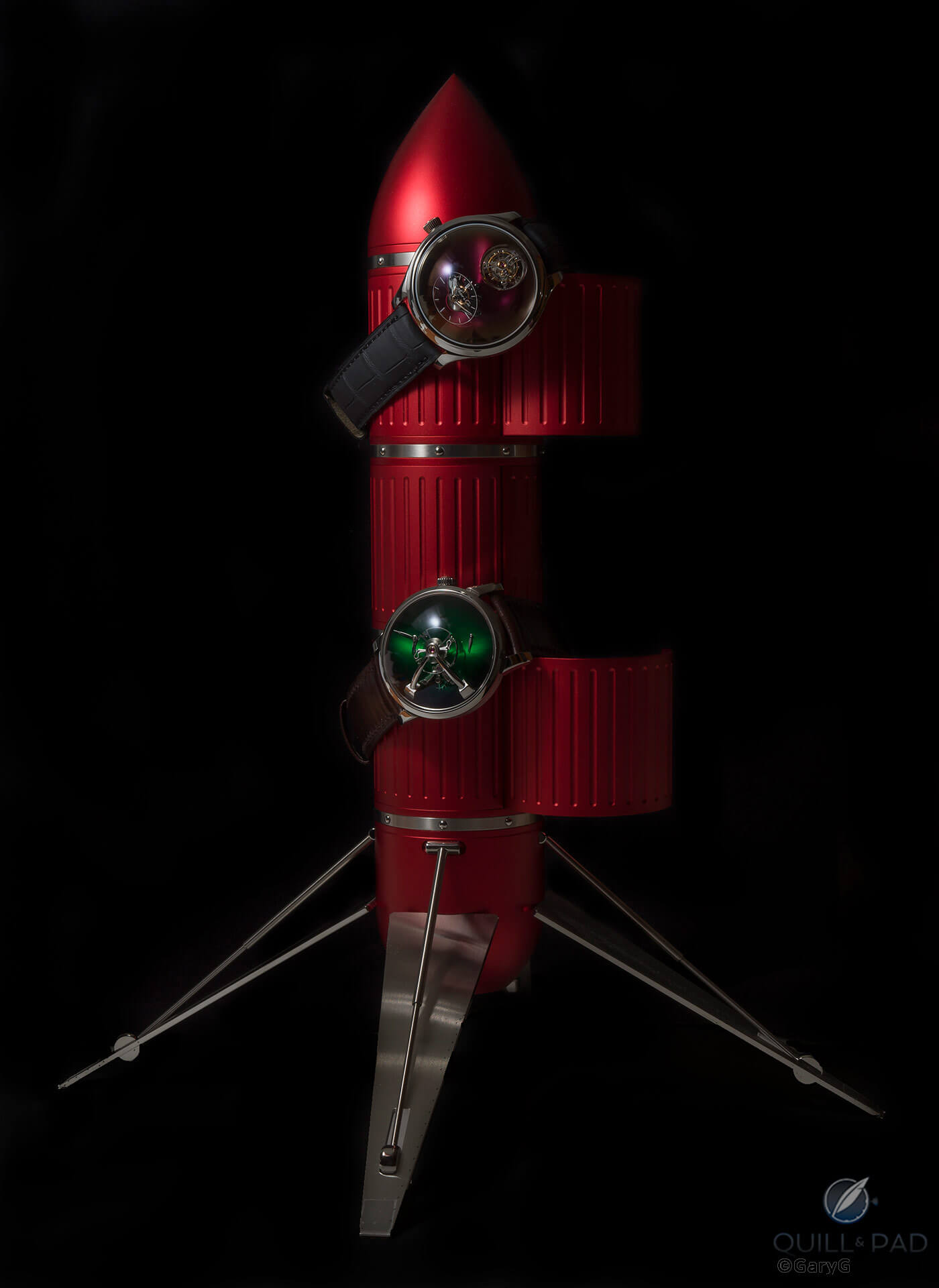
Shot in a flash: daylight shot against a dark background, MB&F x H. Moser watches
It’s especially hard to shoot two watches side by side when one has a light dial and the other a dark one. With dark-dialed watches it’s very easy either to lose polished hands and markers into the background or have them appear harsh and blown out.
And if you study photos of watches with moon phase indications, you’ll see that in a great many of them the moon, stars, and sky simply can’t be seen. It took some work (and some improvisation with bounce cards), but here’s a “team photo” of two Patek Philippe perpetual calendars that I think worked out quite well – and that I couldn’t have done with standing continuous lights.
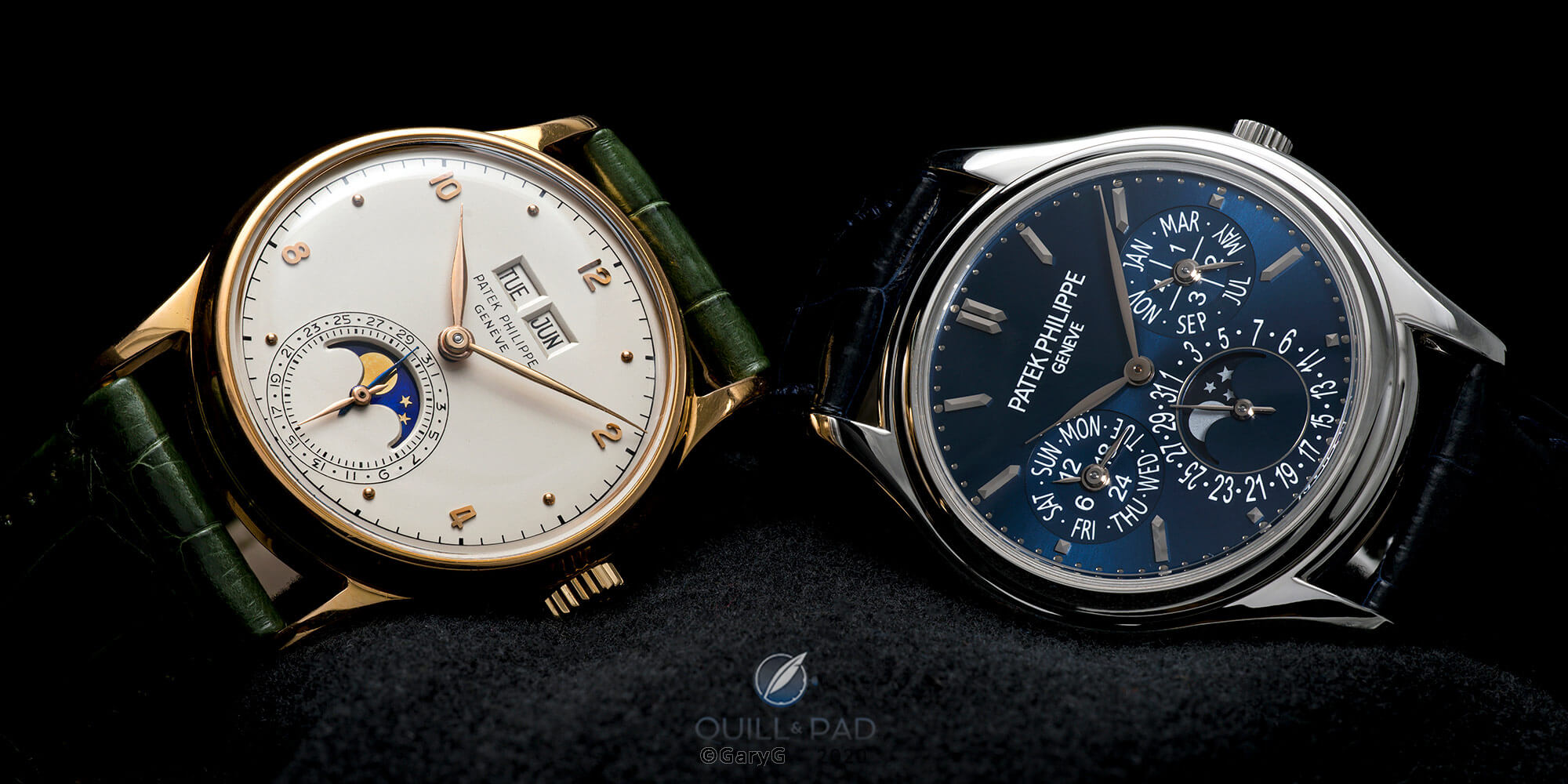
Two generations: Patek Philippe Reference 1526 in pink gold (left) and Reference 3940P-027 “Vintage Collection” perpetual calendars
Finally, some watches are just stinkers to shoot!
The new Kurono Anniversary Mori is a prime example with its brushed and highly reflective green dial and shiny, fairly flat hands. Even with flashes I struggled mightily but did get at least one solid look; my reward is that the kind folks at Kurono have included this shot in their book celebrating their first year of existence, so I guess it turned out okay!
I hope you’ll stay tuned for an upcoming “Why I Bought It” on this one.
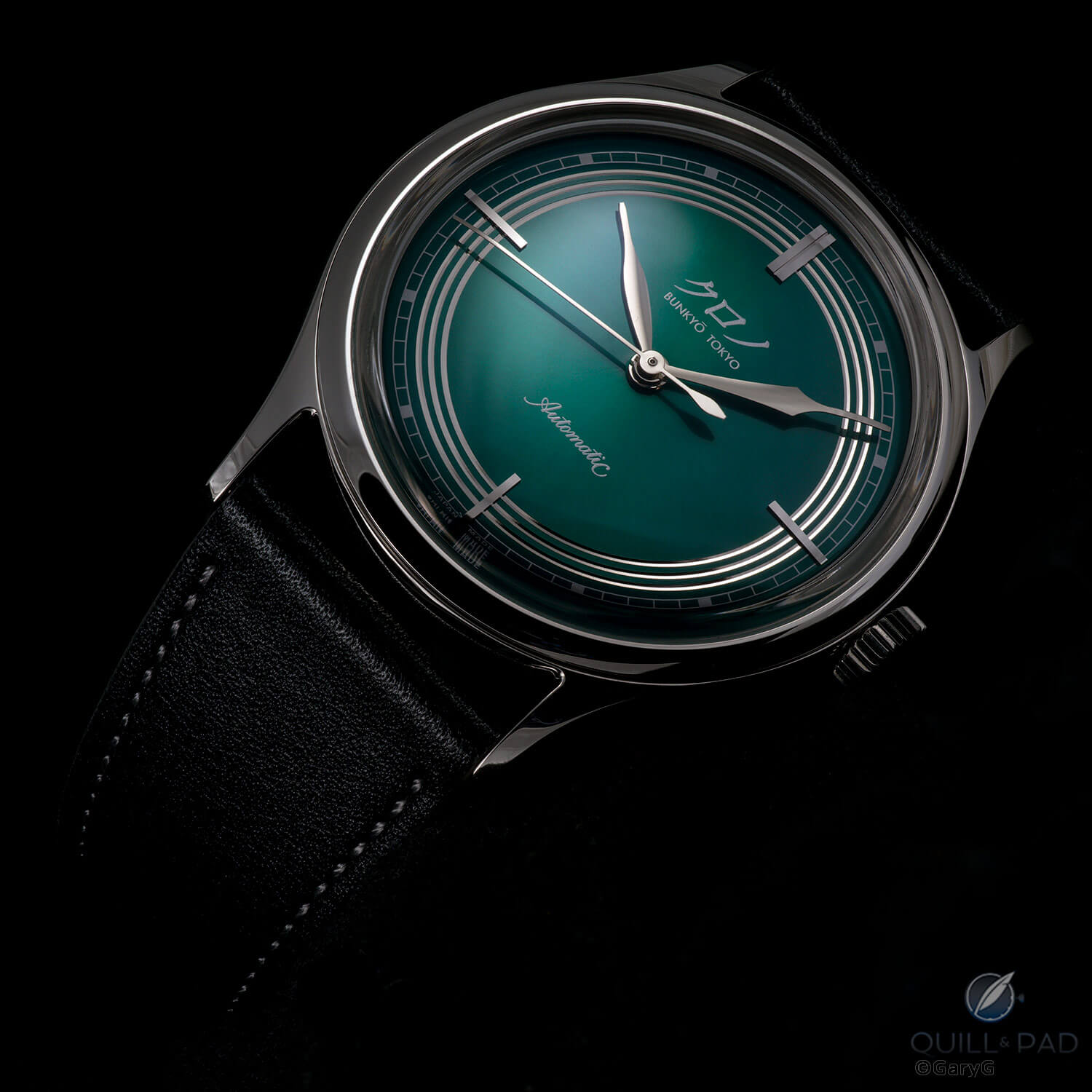
Gotcha: Kurono Anniversary Mori by Hajime Asaoka
Coming full circle
Most recently, I’ve come back around to some shooting with favorite subjects, seeing how I can use flash in my traditional chiaroscuro style. I like the moody look, and the great news is that as I get past the novice stage with flash macro work I suspect that it will help me make richer images in that vein as well as continue expanding into higher-key imagery and have more fun with positioning, backgrounds, and props.
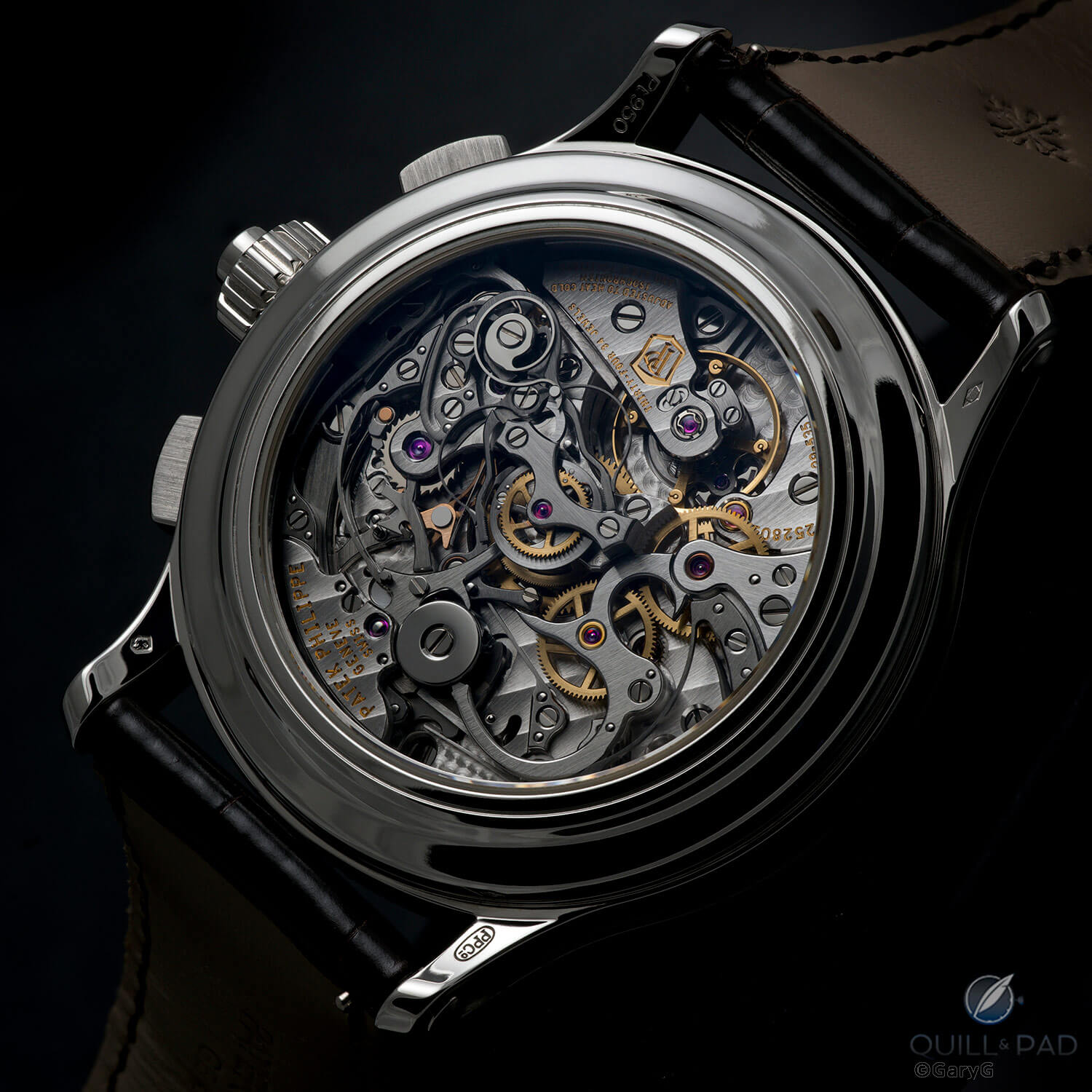
Parting shot: movement side, Patek Philippe Reference 5370P
I’ll look forward to hearing your own experiences with macro photography – and with trying new tools and methods – in the comments below. In the meantime, happy shooting!
You may also enjoy:
Hands On & Live Photos: MB&F x H. Moser LM101 And H. Moser x MB&F Endeavour Cylindrical Tourbillon
Leave a Reply
Want to join the discussion?Feel free to contribute!








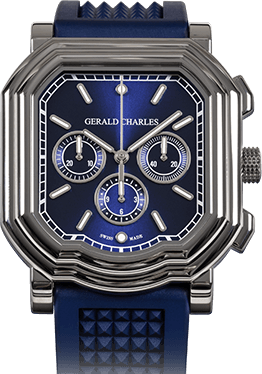
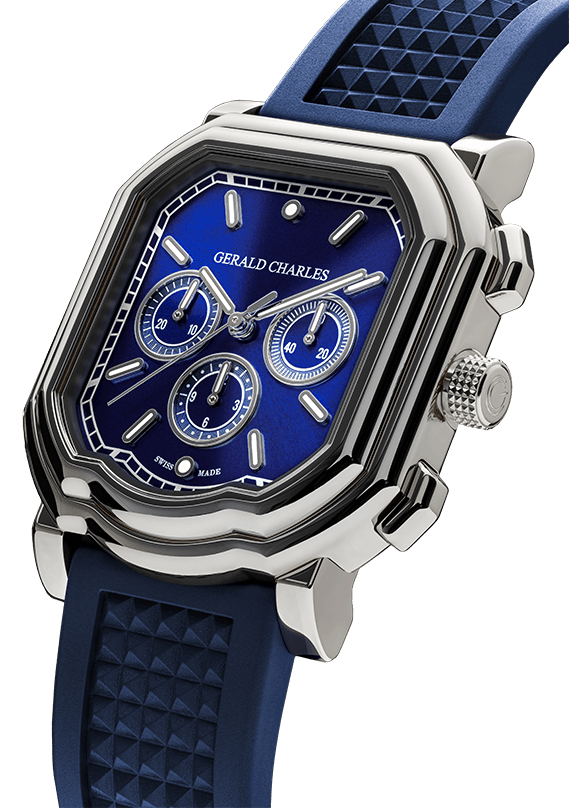

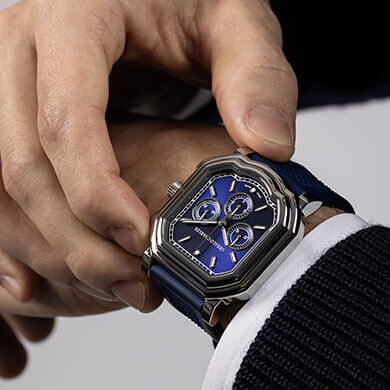






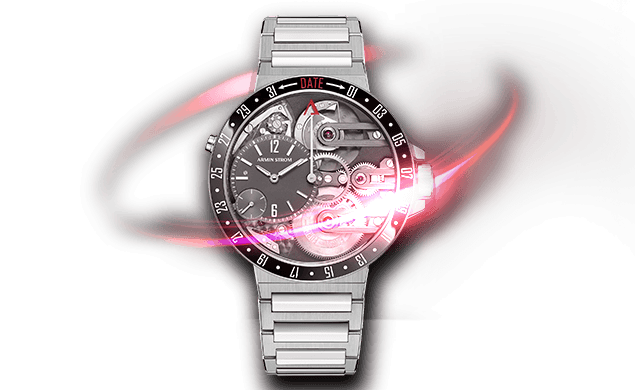
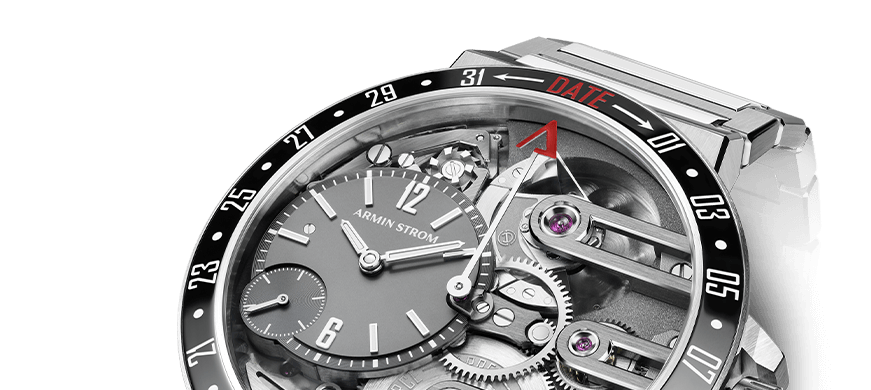
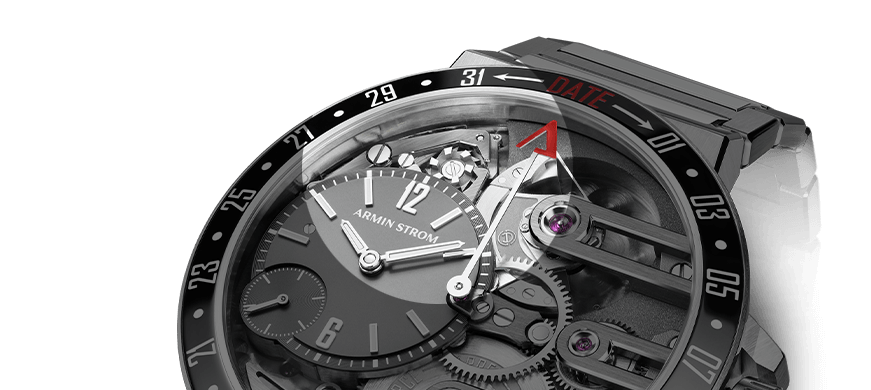


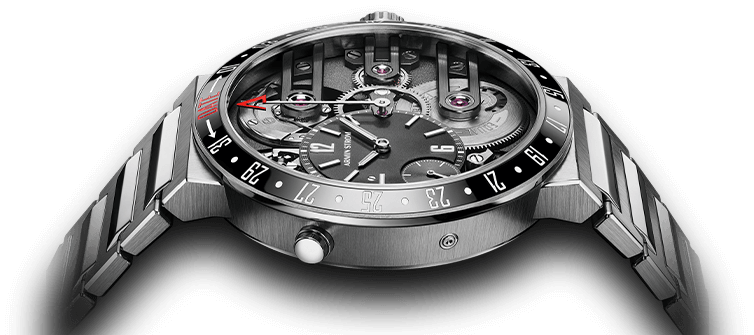
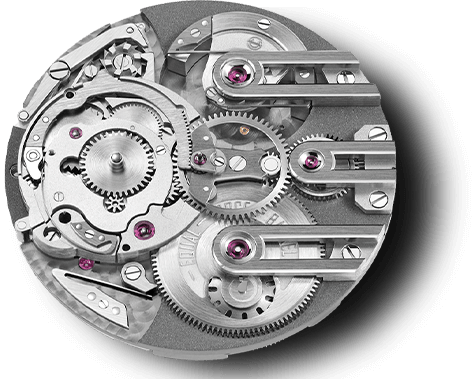


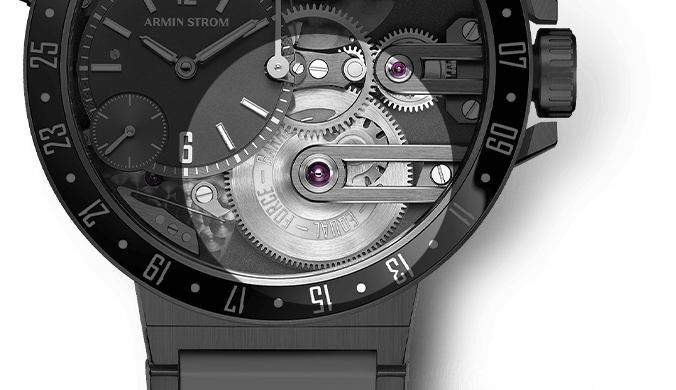


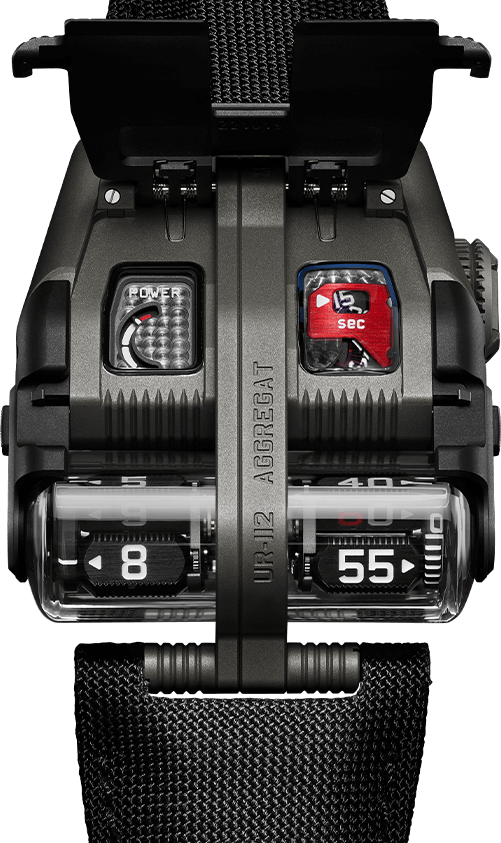

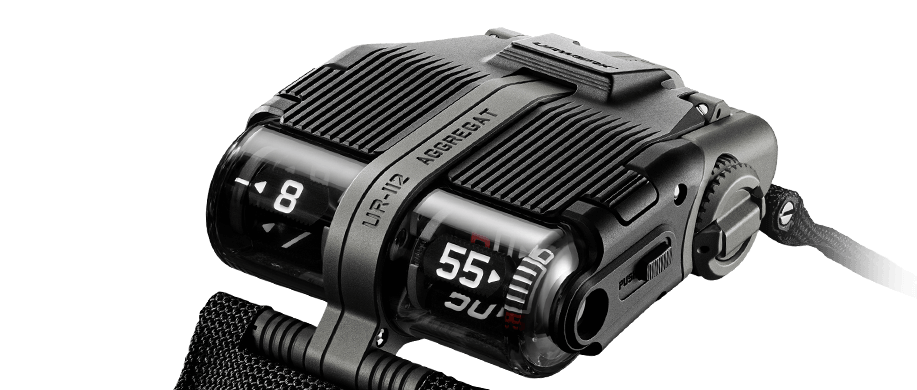
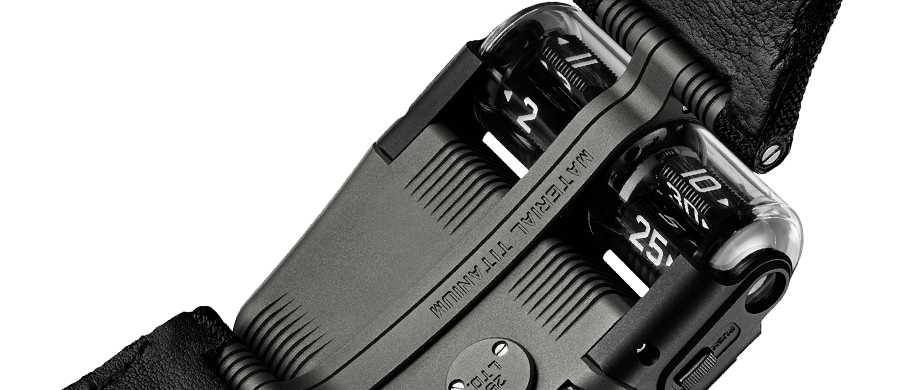
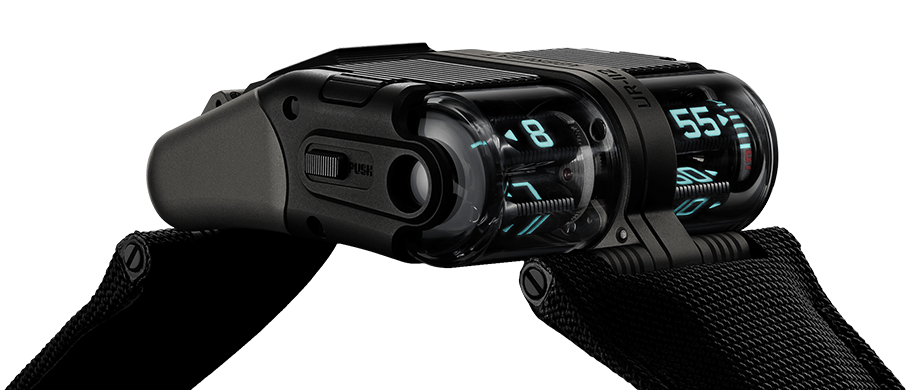


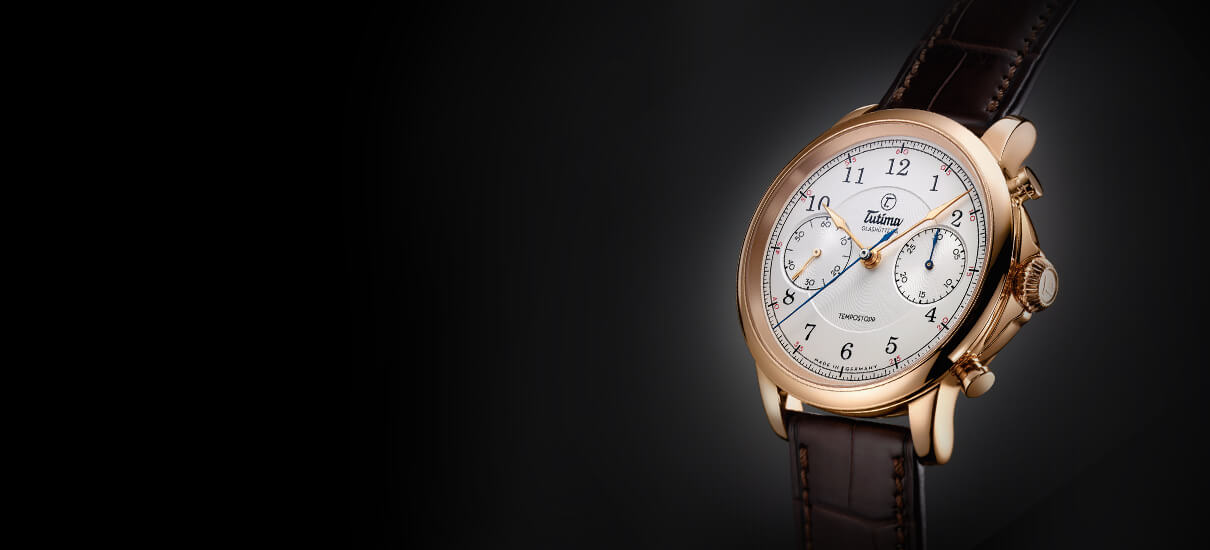

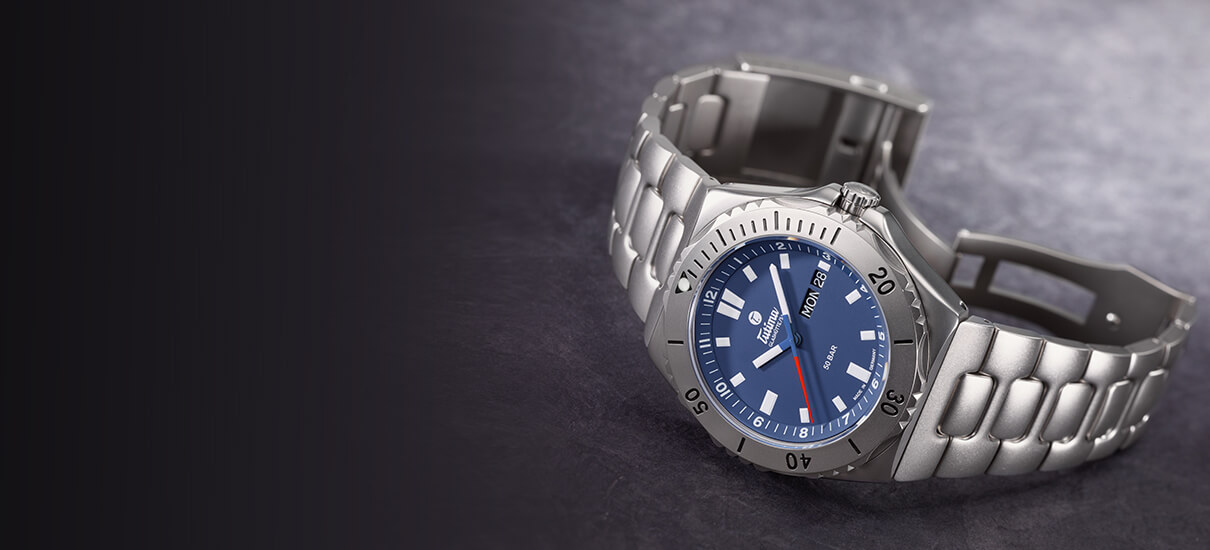

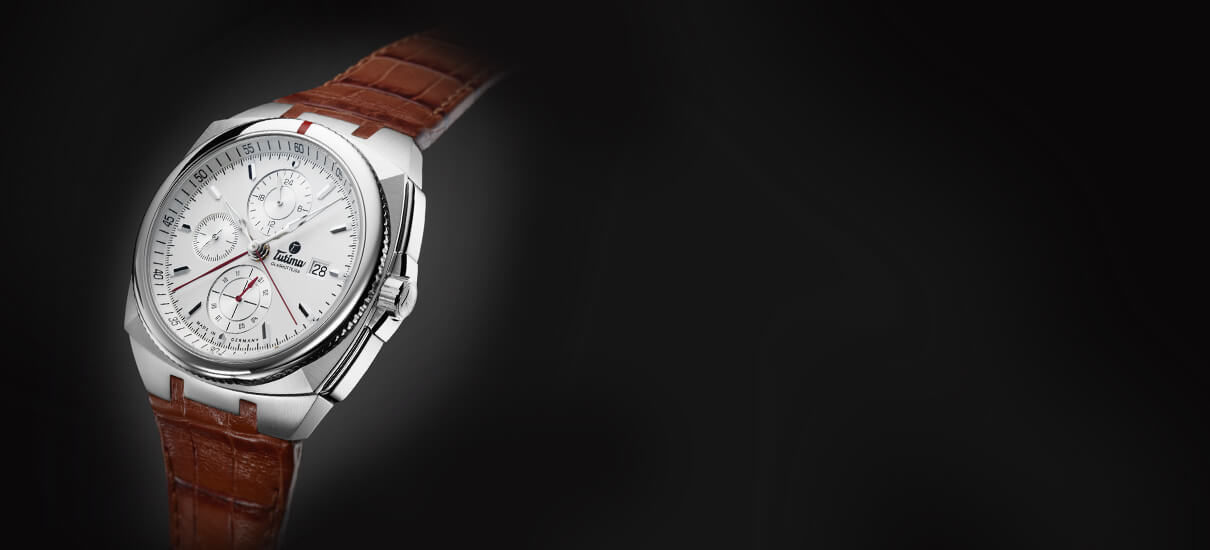

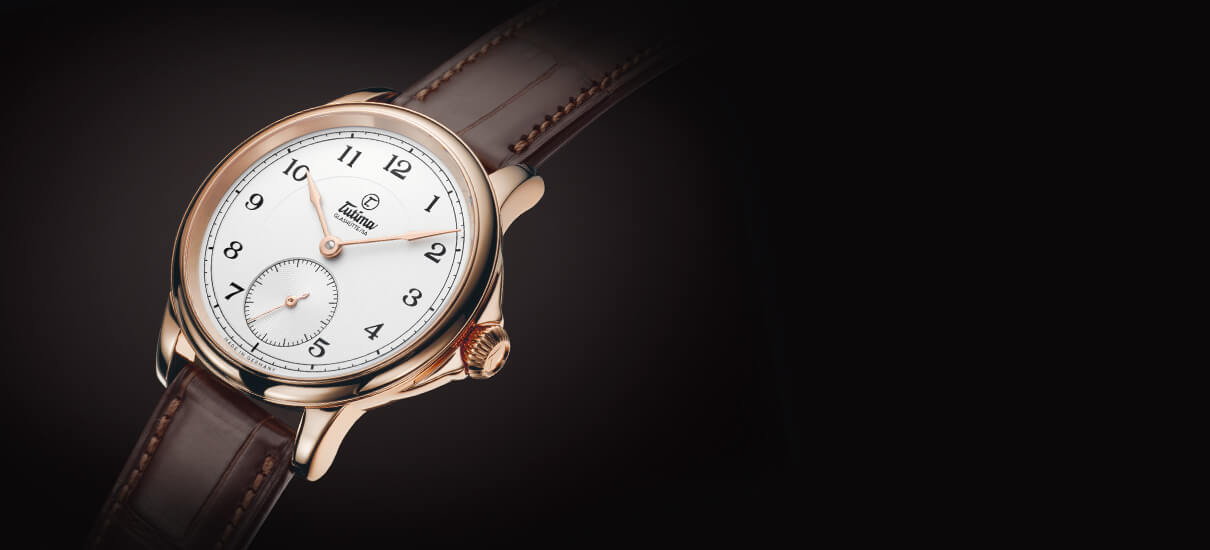

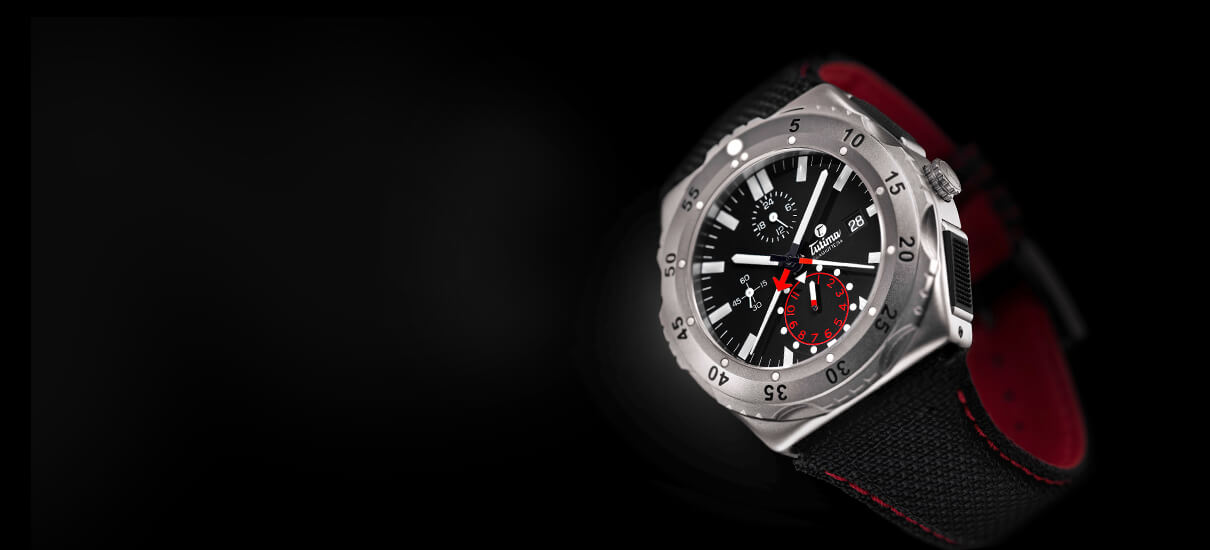

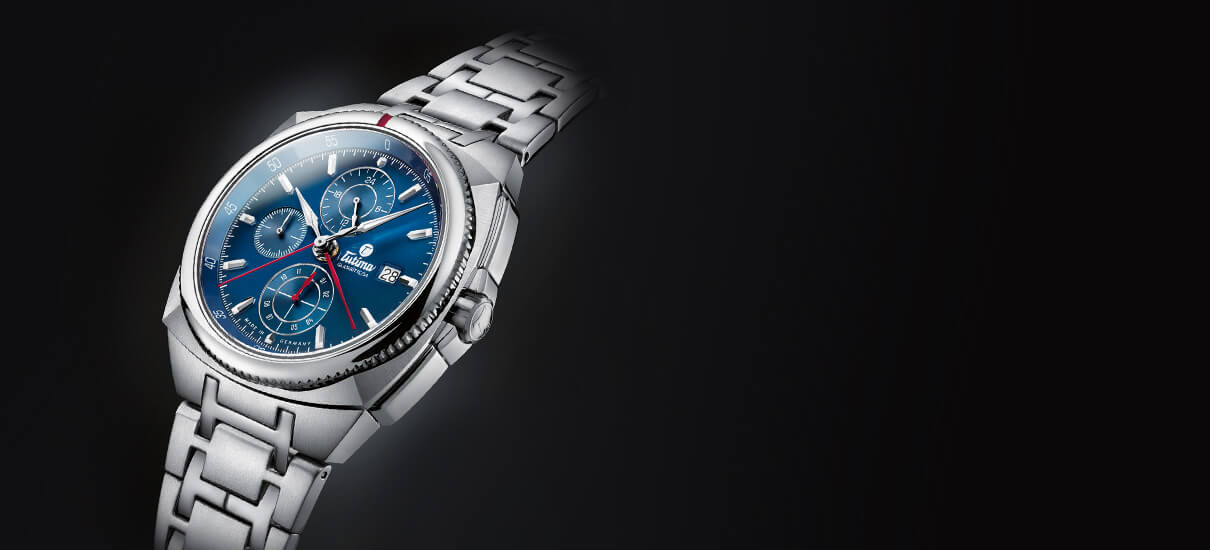

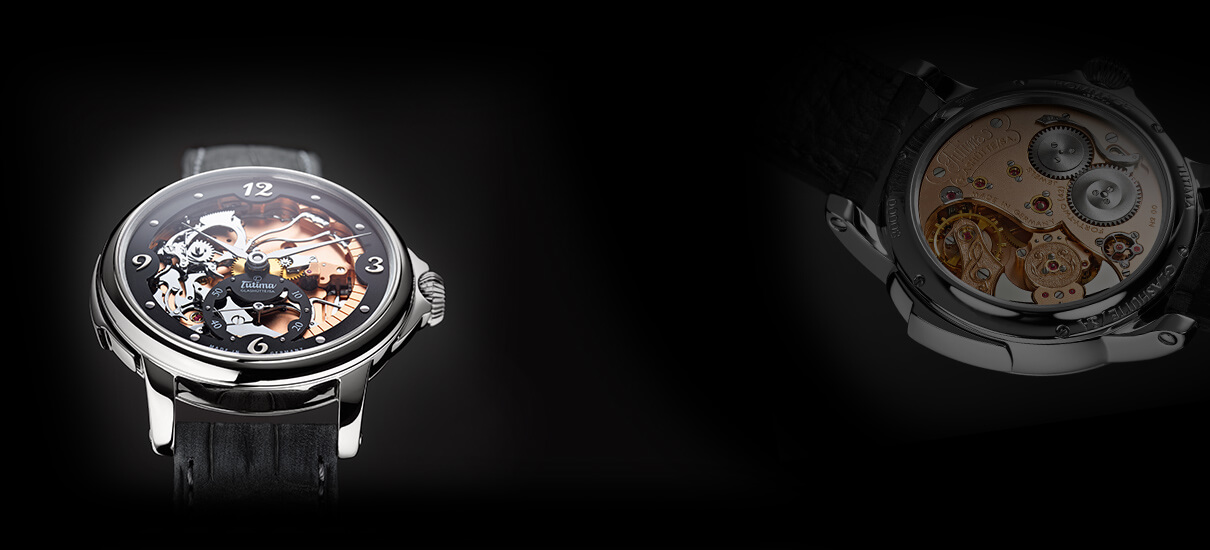



I’ve got fairly good results with only one light, or one bigger light and umbrella (Peter Chong style) or the combination of two…
Still find ir hard to control the blown highlights or the too dark areas depending on the watch position during a live shooting.
You got nice results. Looking forward to observe the evolution. Ming is a great teacher.
Ming is a great teacher indeed! Live shooting (for instance, at a show) is so tough — I’m fortunate to do most of my work under controlled conditions.
When there are blown out highlights, the answer is generally more diffuse lighting — I have a variety of inelegant approaches to that, but at least they seem to work…
Happy shooting!
Best, Gary
I’ve been doing a bit of photo stacking during the lockdown. Usually stacking up to ten images, all with different focal points, to get an image that’s sharp throughout. It doesn’t always work but it’s good fun. Quite often I use a Nikon R1C1 setup, with the occasional LCD panel. I have a Nikon D5 and Nikon D780 but find the D780 better as I put it into Live View mode and gently tap the LCD screen at the area of the picture I want in focus, it focuses then takes the shot. I find it easier than manual focusing in each area.
Thanks for sharing some details of your techniques — very interesting and helpful. I avoid some of the issues with focusing a single shot since I use stacking so much, but I think your idea of tapping the screen for precise autofocus is a really good one. As I’m sure you observe, there are so many “artistic” watch photos out there that in fact suffer from being focused on nothing in particular that it is really helpful to have ways of getting the intended part of the movement or dial in ultra sharp focus!
Best, Gary
Nice article! I don’t love the ‘ikea hamper’ light diffuser, having developed far more subtle and artifact free one decades ago ( plexitent) but I’m hugely impressed by your control of the flashes. I prefer one flash bounced off ceiling for base and all other lights as LED .
Thanks for sharing these details, Neta! I agree with you 100 percent on the “hamper” tent — I took some initial steps to build my own Plexiglas enclosure but had enough difficulties with materials procurement that I stopped. Perhaps I should go back at it!
Interesting thought on bounce flash plus LED — I have all of the equipment, so will do some experimentation!
Thanks again,
Gary
Hi Gary,
Great article and sensational timepieces.
I have a Hasselblad X1D and Godox flashes as well. My X1-N transmitter isn’t communicating with my camera via the hotshoe.
Is the Xpro different in that it’s wired into the camera which ensures it works?
I just don’t want to go out and buy a whole new flash system just for the Hasselblad.
Your assistance would be great.